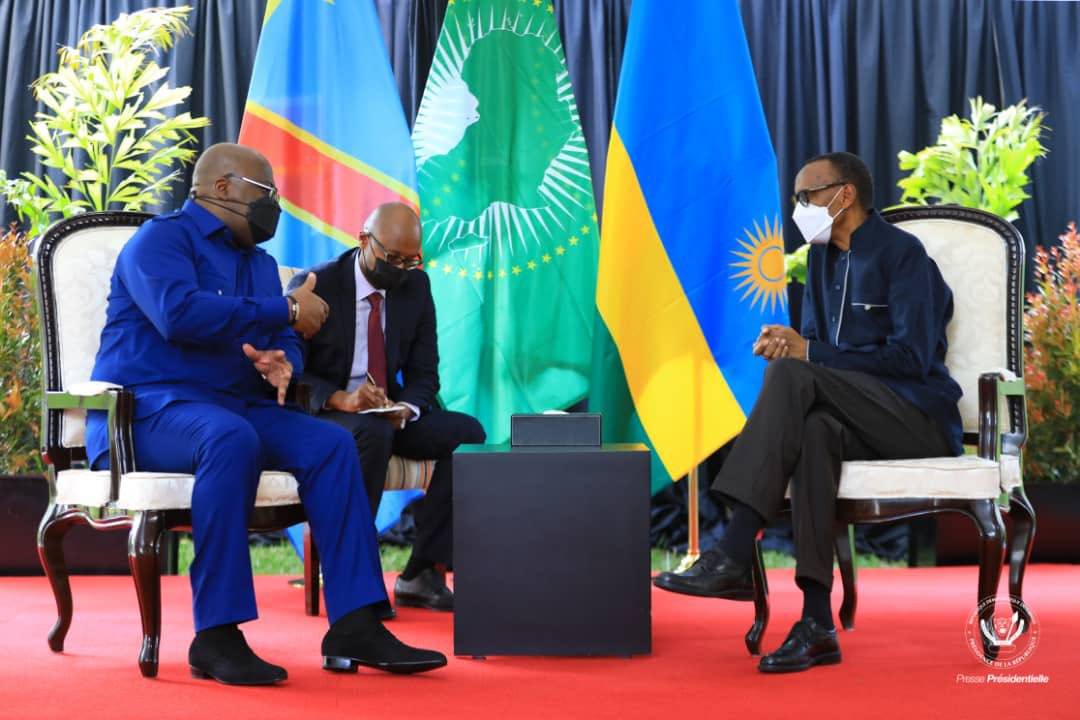**EAC-SADC Summit: Towards a resolution of tensions between Kinshasa and Kigali?**
On February 3, Kenya sounded the alarm by announcing the holding of an extraordinary summit bringing together the Congolese president, Félix Tshisekedi, and the Rwandan president, Paul Kagame. This summit, scheduled for February 8 in Dar es Salaam, the economic capital of Tanzania, is part of a context of heightened tensions between the two countries, the result of a complex interweaving of geopolitical, economic and historical interests.
### An explosive situation
The situation in the Democratic Republic of Congo (DRC) is currently marked by the advance of the armed group M23, which continues to threaten the stability of the east of the country, particularly the strategic city of Goma. This context of crisis is not limited to a simple local conflict: it highlights broader regional rivalries, between actors with varied agendas. The rise of the M23, often accused of being backed by Rwanda, has exacerbated the already existing historical tensions between Kinshasa and Kigali. The absence of constructive dialogues and mediation mechanisms has often led to violent escalation, calling into question the stability of the world’s most resource-rich country.
### Regional dynamics
The upcoming summit raises the question: what will be the real intentions of the states involved? If we step back and look at the composition of the East African Community (EAC) and the Southern African Development Community (SADC), the picture becomes more complex. These regional organizations have often been seen as forums for exchanges, but they also harbor internal rivalries that can influence the outcome of the discussions.
Consider, for example, the position of Kenya, a key player in the EAC, which has its own strategic interests regarding access to resources and regional security. Torn between its role as mediator and its national interests, Nairobi is navigating troubled waters. Moreover, Tanzania, as host and influential member of SADC, may seek to assert its regional stature by playing the role of arbitrator.
### Comparison with other regional crises
To illustrate the importance of such a meeting, an analogy can be drawn with other crises that have required the intervention of regional forums. For example, the peace process in Burundi in the 2000s was facilitated by a series of summits bringing together various regional actors, which led to an agreement. However, these forums do not always guarantee lasting solutions: without a genuine willingness to engage in dialogue on the part of stakeholders, commitments can remain a dead letter.
### Security Issues Analysis
Failure to address the current security crisis could also have catastrophic consequences not only for the DRC, but for the entire region. The potential repercussions of instability are worrying. According to estimates by the Institute for Security Studies (ISS), a deterioration in security in eastern DRC could lead to a massive influx of refugees to neighboring countries, thus exacerbating tensions and resources in an already stressed region. Furthermore, the rise of armed groups can serve as a breeding ground for the expansion of transnational criminal activities, such as arms and natural resource trafficking.
### A glimmer of hope?
Holding this summit could serve as a platform for reconciliation, but a real discussion requires more than a few hours of negotiations. Heads of state must come with a sincere desire to find solutions and lay the foundations for sustainable cooperation for peace.
It will also be essential that key civil society actors, including non-governmental organizations and youth groups, are invited to take part in this process. Their involvement could ensure that the decisions taken in Dar es Salaam are not only the result of elite discussions, but also take into account the voices of Congolese and Rwandans who live the consequences of these conflicts on a daily basis.
In conclusion, while the EAC-SADC Summit represents a valuable opportunity to address the crisis in eastern DRC, its success will depend on the sincerity of the commitments made and the inclusion of the various regional voices. It could well be a turning point in a peace dynamic that must, it is necessary, move beyond rhetoric to enter into the reality of actions. The eyes of the world will be fixed on Dar es Salaam, hoping for a brighter future in a region too often overshadowed by conflict.

